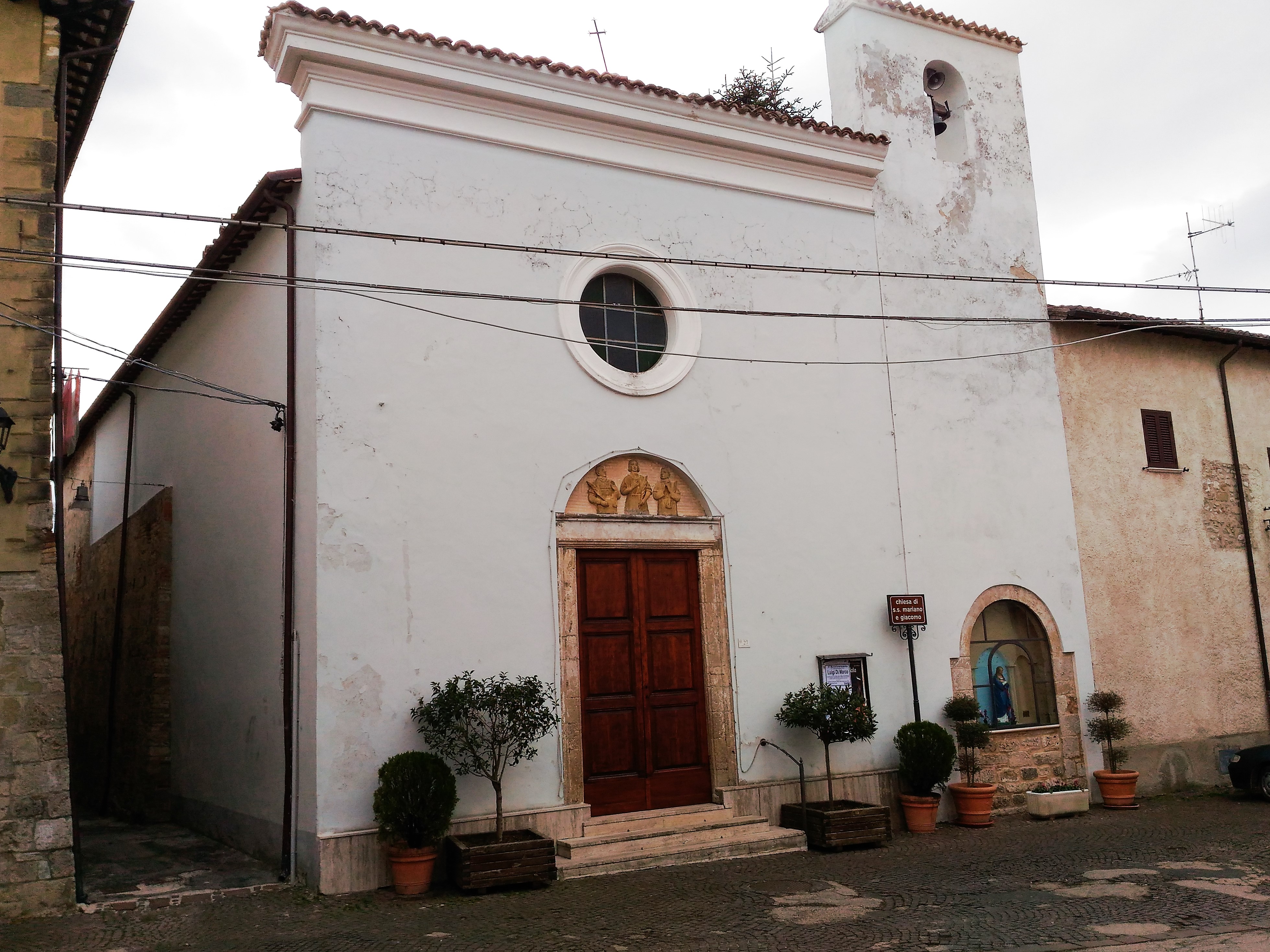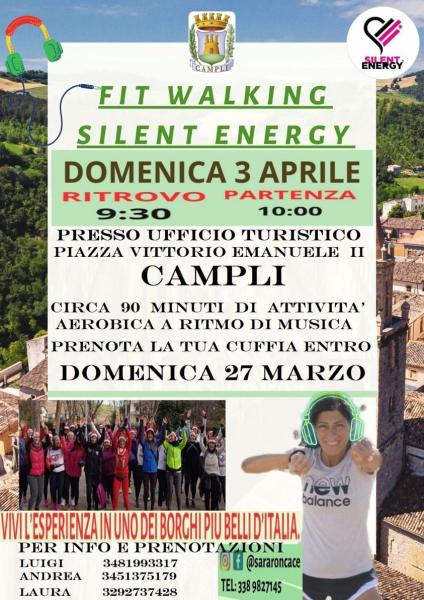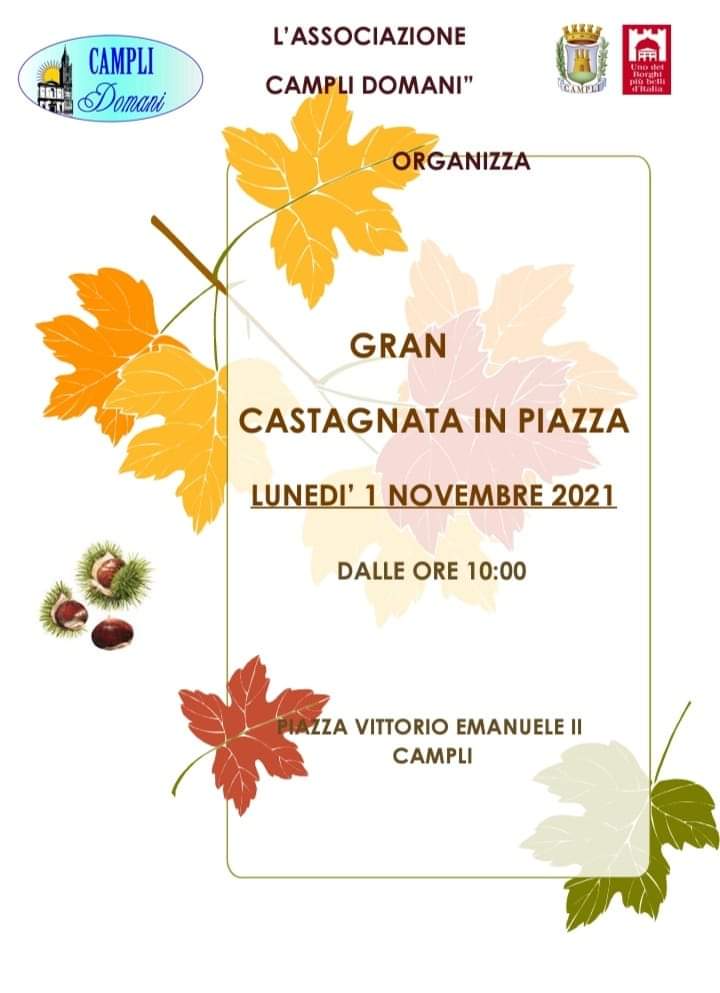Parish Church of SS. Mariano and Giacomo
In 1600 Giovanni Farina donated his home located on the site of the Ricci houses to the Carmelites, later transformed into a convent, where the friars settled in 1605.
The building, in masonry with unworked stones and little mortar, has a lowered arch portal with molded frames and volute; next to the entrance there is a seventeenth-century majolica depicting the "Madonna del Carmine and Souls in Purgatory".
The former convent houses a cloister with a loggia with round arches and cross vaults. The annexed Parish Church of SS. Mariano and Giacomo was the friars chapel. The last abbot of the ancient Collegiate Church (no longer existing) transferred the cult there because it was dilapidated and closed by the French suppression of the Order.
The small building has a raised rectangular façade and a bell gable with a single bell; the walls on the right have a shoe reinforcement. In the lunette above the portal are depicted in bas-relief the holy martyrs titular patrons of Nocella, including S. Pancrazio protector of Campli; above an oculus.
The interior, with a single nave, is striking for its beautiful Baroque wooden ceiling, with perspective views, architecture and tondi with Carmelite saints. In the center, the "Madonna delivering the scapular to St. Albert of Jerusalem" (or St. Simon Stock).
Behind the main altar there is a modest canvas representing the "Madonna del Carmine with Carmelite Saints and Souls in Purgatory"; in a lower corner the client, perhaps Giovanni Farina. On two side shelves wooden statues of the Madonna del Carmine and S. Gabriele dell’Addolorata, patron saint of Abruzzo.
The church also houses a clay bust of the Nocellese school (S. Antonio Abate); under a side altar, an arm reliquary (1778) and a bust of St. Mariano, in silver foil and gilding. From 1604 to 1716 the presence of the Confraternity of the Rosary is documented. The parish had 11 chapels of lay patronage.
Currently not accessible.









